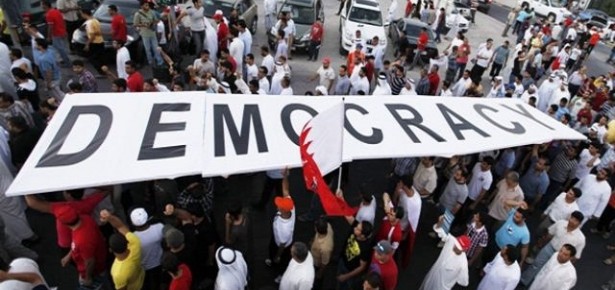
In 2011, twenty-six democracy protests occurred in the world. Most arose in the Middle East and North Africa, but a few protests also took place this year in Asia, Europe, and Latin America.
The 2011 protests suggested two things to onlookers: first, that protests arise in waves and spread across countries and second, that democracy protests are ineffective in issuing in democracy reforms. Both things are incorrect.
Democracy protests do not occur in waves and do not diffuse across countries. Democracy protests result from domestic processes, which are generally unaffected or undermined by the occurrence of democracy protests in other countries. Between 1989 and 2011, democracy protests were more likely to occur during economic crises because crises increase discontent with governments, and authoritarianism in particular, and also increase support for opposition candidates. Opposition candidates organized a plurality of all democracy protests in this period and were more likely to organize protests in this period around elections, especially around close elections that they lost.
Moreover, in my new co-authored research with Adrián Lucardi, I show that democracy protests do not diffuse to other countries. Between 1989 and 2011, democracy protests were not significantly more likely to occur when democracy protests occurred in neighboring countries, even when these neighbors were influential or similar to other countries in terms of various political and socio-economic features. Nor, were they more likely to occur when democracy protests in neighboring countries were not repressed by their governments, or were able to extract political concessions from them.
In further contrast to expectations, Democracy Protests shows that democracy protests are not ineffective in inducing governments to undertake democratic reforms. It is true that the overwhelming response of governments to democracy protests is repression and that democracy protests only account for a small percentage of all democratic reforms between 1989 and 2011. However, governments did make democratic concessions to about a quarter of all democracy protests in this period. These concessions included elections for unelected offices, recounts, new elections, lifting of bans on parties, and so forth.
Why are some protests more successful in ushering in democratic reforms? Democracy Protests sheds some light on this issue, but much more work in this area needs to be done. While much attention on the success of protests has focused on the tactics of the protests, and whether they are violent or not, research from Democracy Protests does not find any evidence that peacefulness matters. In fact, the one and only one characteristic that is robustly associated with the success of democracy protests is size. Who organized the protests does not matter, nor does where protest organizers held them, or what they demanded. Only size matters, with larger protests significantly more likely to result in democratic reforms and transitions than smaller protests.
Latest Comments
Have your say!